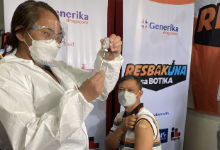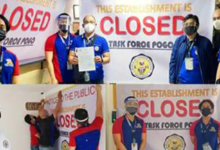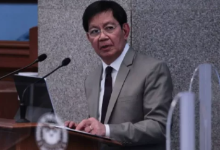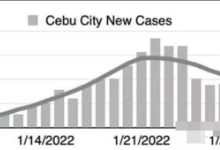DRR experts: Science and technology key to addressing disasters, mitigating its effects in
MANILA, PHILIPPINES (7-8 April 2022)The Asia Pacific is the most disaster-prone region in the world. According to the United Nations, nearly 45 percent of the world’s natural disasters occur in the region and more than 75 percent of those affected by natural disasters globally are its residents. Given our connectedness, cascading natural, man-made, and natural-technological hazards have combined to result in systemic risks that have national, regional, and even global impacts.
In the Philippines, the combination of extreme weather events, geological hazards, and COVID-19 has pushed more people into poverty and reversed development gains. Most disasters in the country have been climate or weather-related and the country is consistently cited as having one of the highest populations affected by disasters. It has impacted livelihoods across all sectors of the economy and resulted in adding millions of people to the nation’s poor. “Today, we are facing incredible and mounting human, environmental, social, and economic losses due to disasters. The SDGs are threatened. Current projections say for the Asia Pacific Region, we will be reaching the Sustainable Development Goals in 2065 which is 35 years beyond the expected and agreed timeframe,” Marco Toscano-Rivalta, Head of UNDRR-ROAP shared. This complex combination of factors demands a continuous commitment to understand disaster and climate risk, catalyze trans-disciplinary and international cooperation, and inspire the movement of knowledge to action.
。 It was co-organized by the Philippine Government, represented by the National Disaster Risk Reduction and Management Council (NDRRMC) - Office of Civil Defense (OCD), the Department of Science and Technology (DOST), and the National Resilience Council (Chair of the Organizing Committee), and the United Nations Office for Disaster Risk Reduction Regional Office for Asia and the Pacific (UNDRR-ROAP) and UNDRR-led Asia Pacific Science and Technology Advisory Group (APSTAG) and Alliance for Disaster Resilient Societies (ARISE). This multi-stakeholder conference was made possible by the generous support of Global ARISE Board Member, SM Prime Holdings, Inc., and the participation of the Integrated Research on Disaster Risk (IRDR), U-INSPIRE Alliance, DOST-National Academy of Science and Technology, University of the Philippines, Ateneo de Manila University, and the Manila Observatory.
Led by APSTAG and held every two years, the first blended international conference was inspired by the need to accelerate disaster resilient development and provide a platform to continue the science-policy dialogue. Experts in the fields of climate and disaster science and technology, and risk governance gathered to take stock of advancements towards the goals of the Sendai Framework for Disaster Risk Reduction 2015-2030, the Sustainable Development Goals, the Paris Climate Agreement, and the New Urban Agenda highlighting compound, cascading, and systemic risk.
A global virtual audience of over 1000 participants joined the 150 industry leaders from national and local government, the private sector, academia, and international and Philippine non-government organizations attending the event in person. Some notable attendees include Mr. Ernesto Garilao, Chairman and President of the Zuellig Family Foundation; Dr. Ernesto Pernia, former Director-General of NEDA and Secretary of Socioeconomic Planning; Ret. MGen. Restituto Padilla, Spokesperson of NTF COVID-19; Hon. Proserfina Coro, Mayor of Del Carmen, Surigao del Norte; Fr. Jose Ramon Villarin, Executive Director of the Manila Observatory and Vice Chair of NRC; Mr. Jocot De Dios, President and CEO of Manila Water; Mr. Dito Borromeo, CEO of Philippine Transmarine Carriers (PTC) Group of Companies; Mr. Owen Cammayo, Executive Director of BPI Foundation; Ms. Mardi Mapa-Suplido, CEO for Habitat for Humanity Philippines, and diplomats representing the Embassies of India and Australia, to name a few.
The conference featured experts who discussed the localization of science for more inclusive policies, the need for more evidence-based decision making for infrastructure and resource utilization amidst increasing urbanization, how entrepreneurship drives innovation for DRR, and the emerging field of Natech (Natural Hazards Triggering Technological Accidents). This conference fostered regional exchanges on how to better understand, mitigate, and prevent complex, transboundary, cascading, compound, and systemic disaster risks.
Common to the discussions was the recognition that the COVID-19 pandemic has added a new challenge as it revealed how lives, livelihoods, and the environment are exposed and deepened the many difference ways our communities, sectors, and systems, are vulnerable. It has introduced new complexity and uncertainty to the pathways towards resilient development and has imbued the role of local governments with even greater nuance and importance. Long-standing issues on equity and governance are reflected in the differentiated impacts of disasters on communities. “The local level is really key and localizing science for disaster risk reduction is vital in terms of saving lives and also livelihoods in order then to build resilience. This of course includes also leveraging on the synergies between science, local, traditional, and indigenous knowledge,” said Marco Toscano-Rivalta. In these rapidly changing times, more adaptive and transformative leadership is required. Traditional local leadership must broaden its reach in order to address the challenges of disaster prevention, mitigation, response, and recovery in development planning, rather than just in preparedness for emergency response. “I think it is now time for science and technology to provide more risk-informed decision making to local governments to address adaptive governance mechanisms,” said Dr. Rajib Shaw, Professor at Keio University and Co-Chair of APSTAG.
Gustavo Gonzalez, UN Humanitarian Coordinator in the Philippines, echoed this by saying, “At the end of the day, all of these discussions on preparedness, on prevention, and resilience building is a governance issue. It relates to policies, strategic decisions, and financial allocation that put prevention and disaster risk management at the heart of the political agenda。” He added, “We know that allocation for emergency response – I’m the humanitarian coordinator of the UN in this country – is approximately 20 times higher than for prevention and preparedness, in some way countering sustainability principles. We also know that investing in resiliency infrastructure is an investment in the future. Every $1 invested in making infrastructure disaster-resilient saves $4 in reconstruction.”
DOST Undersecretary Dr. Renato Solidum Jr. meanwhile underscored the importance of merging science and technology with other sectors to create a synergy in addressing disasters. “When we recognize the power of science, technology and innovation, we will realize that we are not powerless against the consequences of disasters. It is important that science needs to work with interconnected systems, sectors, and disciplines. Science works, and it works effectively if we use it in our decision making,” Solidum said. Sec. Fortunato De La Peña stated, “As science and technology changes the world, innovation shapes the future”.
To end the two-day conference, Ms. Antonia Yulo Loyzaga presented The Manila Declaration on Science and Technology for Disaster Risk Reduction, written by the conference’s principals, which reiterates a shared commitment to accelerate the implementation of the Sendai Framework to achieve the Sustainable Development Goals, Paris Agreement, and the New Urban Agenda for climate and disaster resilient development. It outlines a commitment to develop and disseminate science, engineering, technology, and innovation (SETI) for disaster risk reduction and a focus on five accelerators for action to achieve synergies between science, policy, and action: actions for science-based adaptive governance; understanding, analyzing, and localizing of SETI solutions; trans-disciplinary education and research and youth leadership and participation; capacity enhancement and investment; and science and technology progress monitoring.
The APSTCDRR is a biennial conference that has been hosted by Bangkok, Thailand in 2016; Beijing, China in 2018; and Kuala Lumpur, Malaysia in 2020. The outcomes and policy recommendations from the conference will serve as a contribution to the Asia Pacific Ministerial Conference on Disaster Risk Reduction on 19-22 September 2022 in Brisbane and the Midterm Review of the Sendai Framework which will conclude in 2023 at a high-level meeting of the UN General Assembly.
For more information about the 2022 APSTCDRR, visit www.resiliencecouncil.ph/event/apstcdrr or email [email protected].













